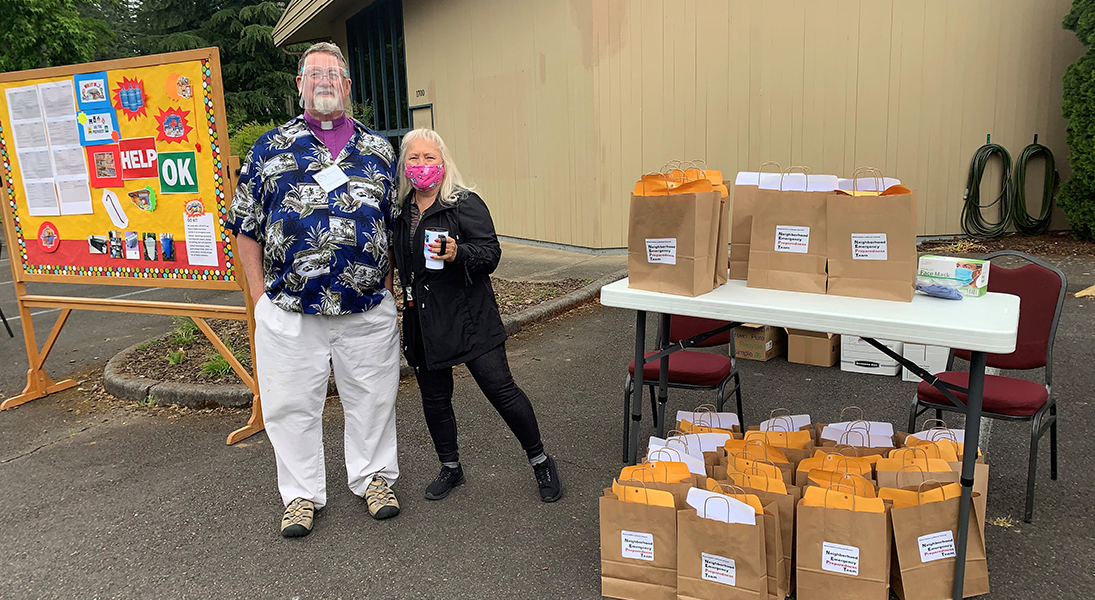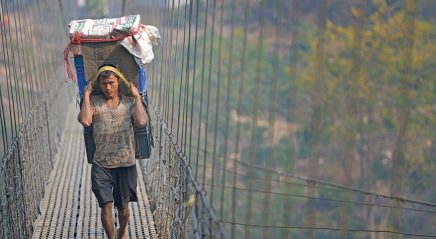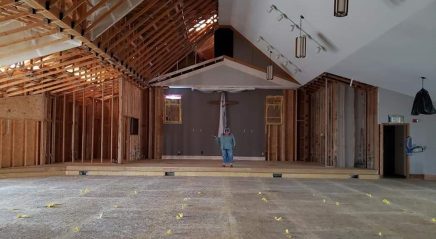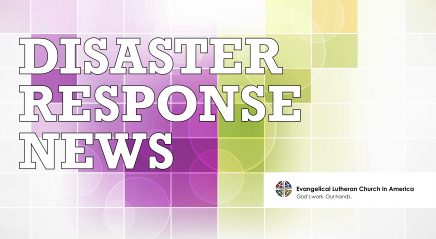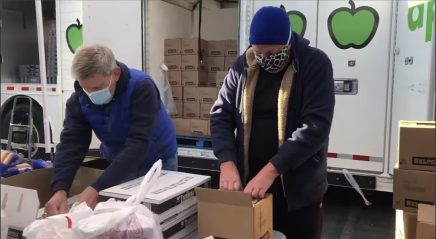Oregonians are waiting for “The Big One.” Every few hundred years, the Cascadia Subduction Zone, a tectonic plate boundary off the coast of the Pacific Northwest, causes huge earthquakes. The last one in the zone was in 1700—the next could be as powerful as 9.0 in magnitude.
The Cascadia earthquake was the impetus for the Oregon Synod Disaster Response Initiative, launched last year. Recognizing that many people aren’t prepared for this earthquake or other disasters, a team proposed forming the Oregon Synod Disaster Response Network to guide congregations through preparedness and to raise awareness about different aspects of disasters.
Laurie Larson Caesar, bishop of the Oregon Synod, has enthusiastically supported disaster preparedness since her election in 2019, inviting the synod’s Disaster Response Core Team to three consecutive assemblies to discuss the issue with attendees. She recognizes that disaster work is congregational vitality work—a thought echoed by Jan Wierima, a Core Team member.
“It began with the bishop buying into the idea that congregations needed to have a plan and, in the act of making that plan [and] having those connections, they can figure out who else is in the neighborhood,” Wierima said. “And the pastors get that [it’s vitality work], and that’s huge.”
Disaster work is congregational vitality work.
The Core Team mentors congregations as they create preparedness plans through monthly meetings (held, so far, over Zoom). At the meetings, the team goes over such topics as flood preparations, air quality during wildfires, pet and livestock safety or what to include in a disaster go-bag. This information helps participants build resilience for themselves, their congregations and their communities. Attendees also share their ideas and experiences with others at the meetings.
Participants are enthusiastic about the initiative, Wierima said, buying into the importance of disaster preparedness and resiliency. While the Cascadia earthquake feels far off, the onset of COVID-19 and a record-setting wildfire season in Oregon made it clear to the team that communities need to continually address this work.
To support this ongoing effort, Lutheran Disaster Response awarded a grant to the Oregon Synod. The grant offers flexibility, allowing the synod and congregations to look at the needs of individual communities instead of dictating specific activities. Beyond the financial help, Lutheran Disaster Response accompanies the Core Team through consultation and technical support.
Engaging neighborhoods
Not only does disaster planning prepare congregations and their members, but it also gives them an opportunity to open their doors. The congregation can become a convener of local disaster response and can inform neighbors about their plans, assuring them that when a disaster strikes, the church will be present to support them.
For Resurrection Lutheran Church in Portland, being a convener meant holding a disaster preparedness drive-thru in its parking lot last May. Guests drove from station to station, picking up food, water, supplies for go-bags and other tools. In addition to the church’s disaster committee, the local fire department and a food bank participated.
Michael Keys, who retired as pastor of Resurrection this year, called the drive-thru “an extraordinary opportunity to engage our neighborhood and neighbors in a brand-new way.”
The disaster committee advertised the event on the church sign and went door-to-door in the neighborhood to invite people. Keys estimates they taped flyers to the doors of over 175 homes. The awareness efforts were effective, Keys said, as around 40% of attendees were non-members.
“[Disaster preparedness] is such integral work for connecting congregations with the communities around them and being a real force for good in the community.”
Laura Gifford, a member of Resurrection’s disaster committee, has been involved with the synod’s initiative since the formation of the network. For churches developing disaster preparedness and response teams, she recommends thinking about what that congregation is equipped to do. Gifford cited the example of her congregation, which recently realized their building was completely
ADA-accessible, making it ideal for serving as a shelter or place to gather supplies. Other churches have large parking lots, strong health ministries or active property committees that can be resources for the community after a disaster.
“It feels like a growing need, both because of the ever-looming Cascadia earthquake but also because of climate change wreaking havoc,” she said.
The Cascadia earthquake might still be hundreds of years away. But wildfires, flooding, winter storms, COVID-19 and countless other disasters are affecting Oregon every day. The synod’s disaster initiative invites congregations to love their neighbors through preparedness and response, forming communities that are connected, caring and disaster-ready.
“[Disaster preparedness] is such integral work for connecting congregations with the communities around them and being a real force for good in the community, something that gets us outside of our doors,” Gifford said.
Learn more about the initiative here. For more on Lutheran Disaster Response, visit elca.org/ldr.




